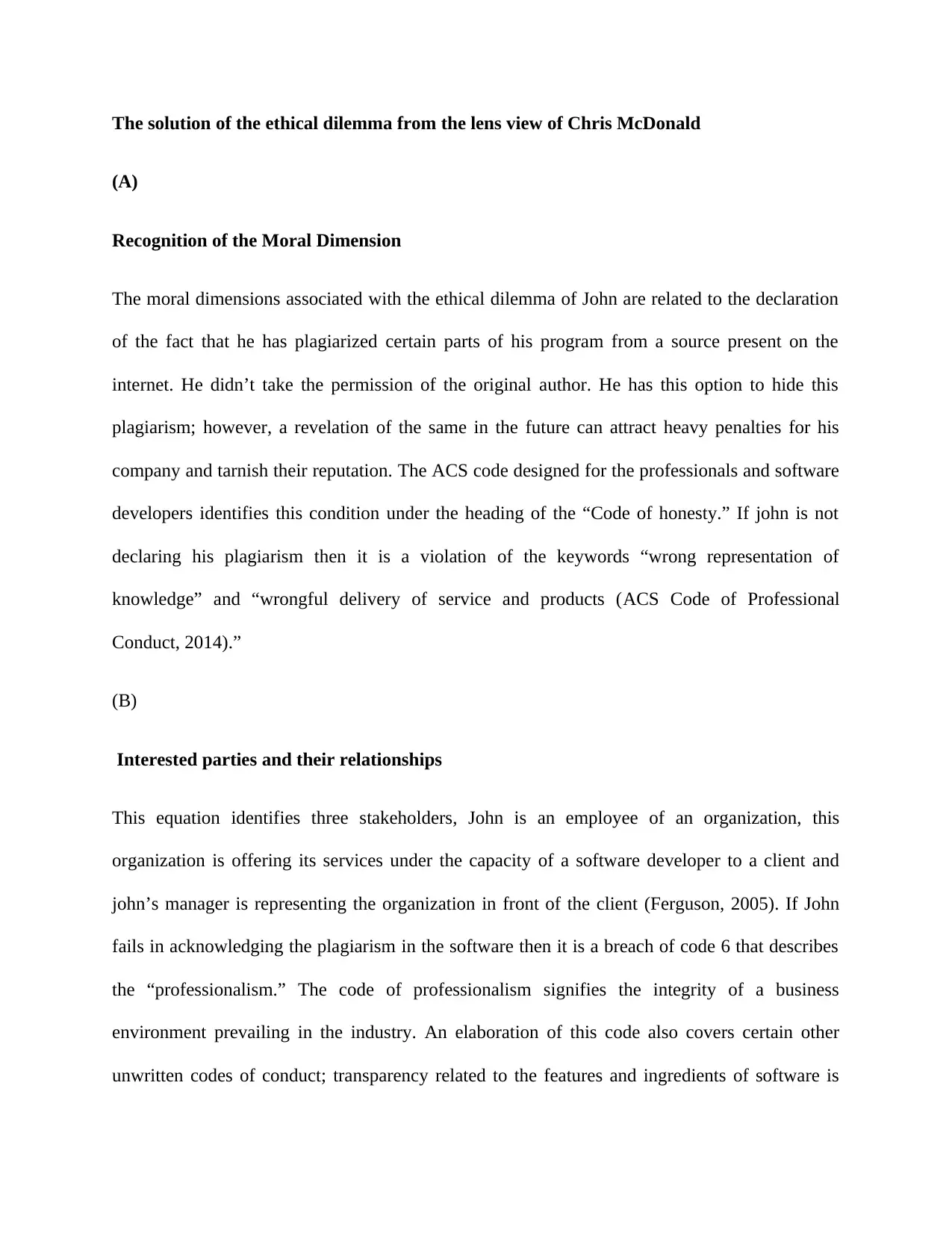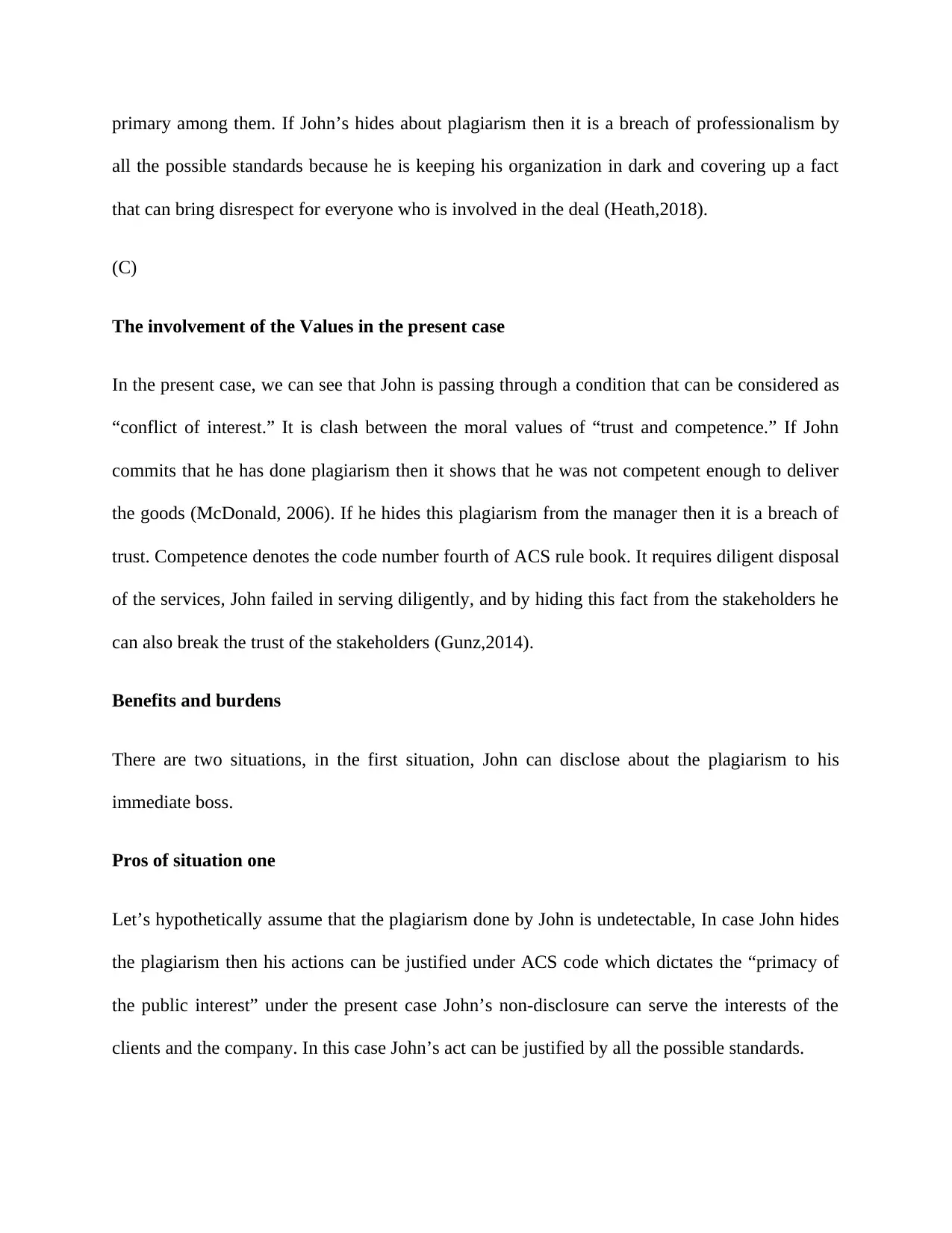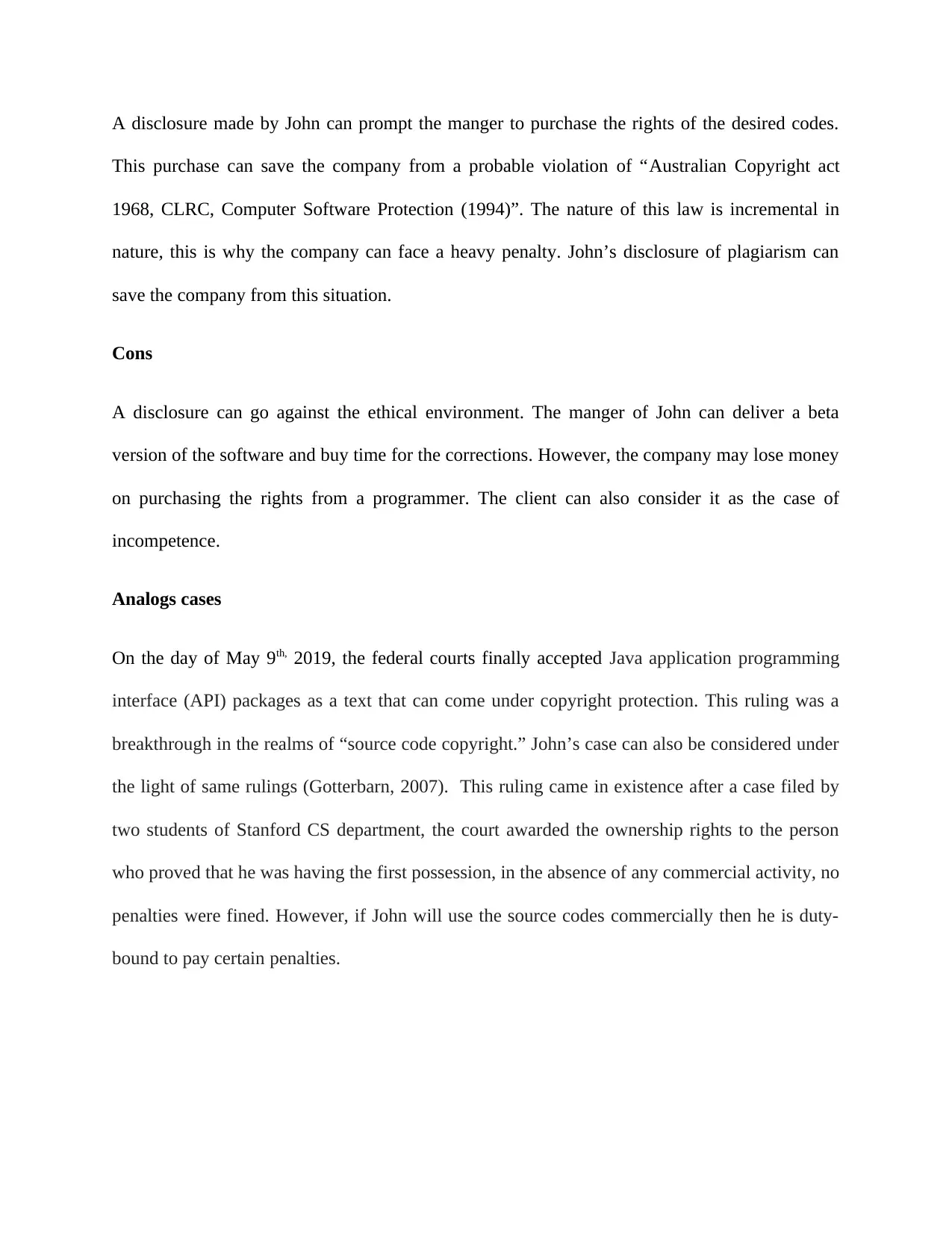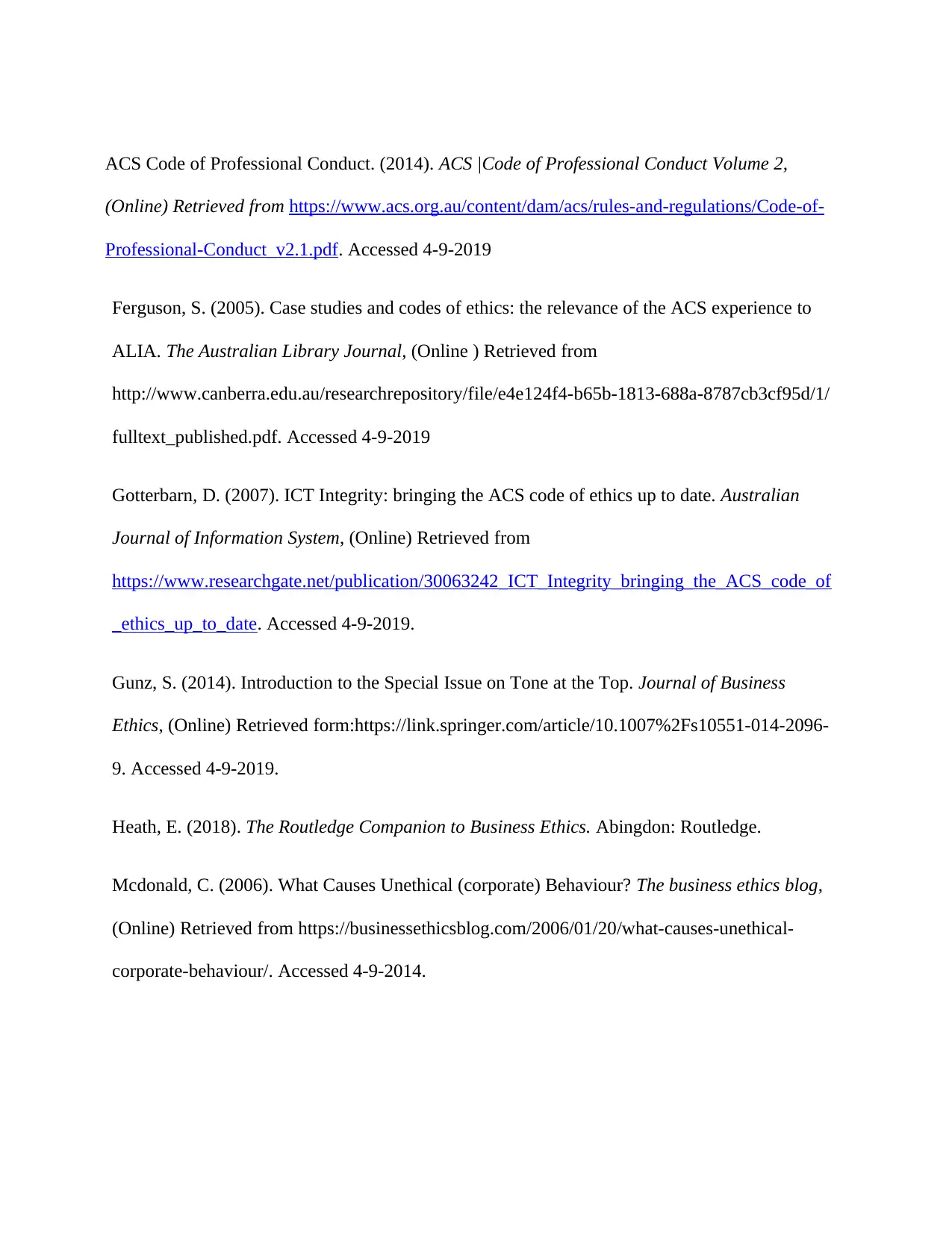Professional Environments: Ethical Dilemma Case Study - John's Program
VerifiedAdded on 2022/11/30
|4
|1045
|88
Case Study
AI Summary
This case study analyzes an ethical dilemma faced by John, a statistical database programmer, who plagiarized code from a co-worker and a commercial software package to complete a program under a tight deadline. The solution, viewed through Chris McDonald's perspective, identifies the moral dimensions of John's actions, including violations of the ACS code of ethics regarding honesty, professionalism, and competence. It outlines the stakeholders involved (John, his manager, the client) and discusses the conflicting values of trust and competence. The analysis explores the benefits and burdens of disclosing or concealing the plagiarism, considering potential legal and ethical consequences. The solution draws parallels to relevant legal precedents, such as copyright protection for source code, and assesses the implications of John's actions under the ACS Code of Professional Conduct. It highlights the importance of transparency and the potential damage to the company's reputation and client relationships. Ultimately, the case underscores the significance of ethical decision-making in software development and the potential repercussions of unethical behavior.
1 out of 4











![[object Object]](/_next/static/media/star-bottom.7253800d.svg)